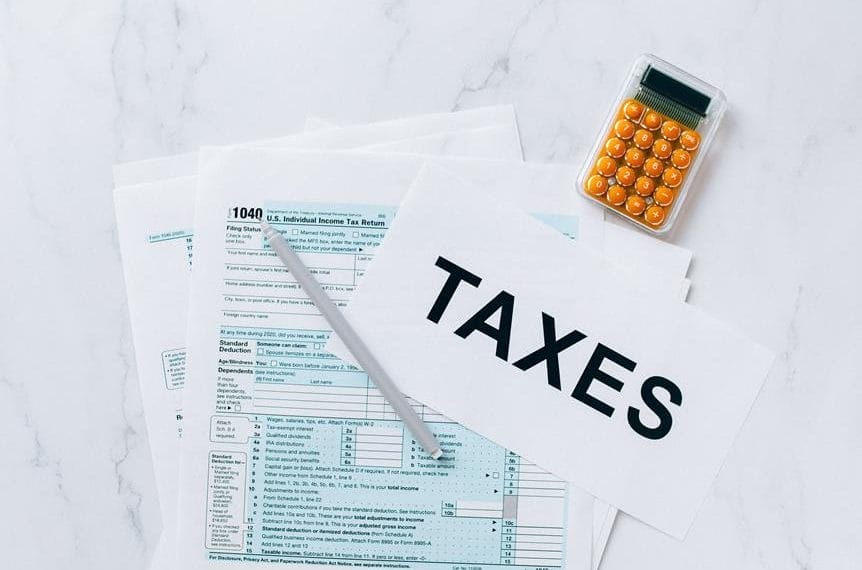As government relief programs decrease and interest rates rise, experts predict an increase in personal bankruptcy filings. If you find yourself in a challenging financial situation, it’s essential to assess your options before considering bankruptcy. Taking the necessary steps can help you navigate the complex process and make informed decisions. Here are some critical steps to take before filing for bankruptcy.
Firstly, seek legal advice. Consulting with a bankruptcy attorney will provide you with a comprehensive understanding of the legal considerations and implications of bankruptcy. They can guide you through the process, ensuring compliance with legal requirements and protecting your interests.
Evaluating your assets is equally important. Determining what you own and its value will play a crucial role in deciding the type of bankruptcy filing and its outcome. Asset evaluation helps determine areas where you may have exemptions and can protect your property.
To gain a clear understanding of your financial situation, conduct a thorough debt analysis. Review all outstanding debts, including loans, credit cards, and medical bills. Assessing the total debt amount and its nature will determine the appropriate bankruptcy chapter for your situation.
Undergoing credit counseling will help you explore alternatives to bankruptcy and get a comprehensive overview of your financial position. Credit counselors can also provide valuable insights and guidance on managing your debts effectively.
Proper document preparation is vital to ensure a smooth filing process. Organize all relevant financial documents, including tax returns, bank statements, and bills. This will provide your bankruptcy attorney with the necessary information to prepare your case accurately. Reviewing everything in advance will streamline the process and minimize delays.
Lastly, consider the legal considerations associated with bankruptcy. Understand the importance of creditor review, as creditors may challenge your filing. Budget analysis is another critical aspect to determine if you meet the requirements for filing and whether you should pursue bankruptcy.
In conclusion, taking the time to complete a thorough financial assessment, seek legal advice, evaluate assets and debts, undergo credit counseling, and properly prepare all necessary documents are critical steps to take before filing for bankruptcy. These steps will help ensure a smoother process and increase the likelihood of a favorable outcome. Remember, bankruptcy is a complex legal process that requires careful consideration and expert guidance.
The Bankruptcy Process: Types and Considerations
Before considering bankruptcy, it’s important to understand the different types available and the factors to consider. The bankruptcy process can vary based on the type of bankruptcy filed, such as Chapter 7 or Chapter 13. Let’s explore these options and the key considerations involved.
Chapter 7 Bankruptcy
Chapter 7 bankruptcy, also known as “liquidation bankruptcy,” is designed for individuals who have limited income and assets. In this process, a bankruptcy trustee is appointed to sell non-exempt assets to repay creditors. Most personal debts, such as credit card bills and medical expenses, can be discharged through Chapter 7 bankruptcy.
Chapter 13 Bankruptcy
Chapter 13 bankruptcy, also known as “reorganization bankruptcy,” is suitable for individuals with a regular income who may have the ability to repay a portion of their debts. Under Chapter 13, a repayment plan is created, allowing the debtor to make monthly payments to creditors over a period of three to five years. This type of bankruptcy can be beneficial for individuals looking to protect their assets while repaying their debts.
Calculating Debts and Assets
Understanding your financial situation is crucial when determining the appropriate bankruptcy filing. Calculating your debts and assets accurately will help you decide which type of bankruptcy is most suitable for your circumstances. Debts may include personal loans, credit card balances, and medical bills, while assets can include real estate, vehicles, and personal belongings.
Consulting with a Bankruptcy Lawyer
Navigating the bankruptcy process can be complex, and it is strongly recommended to seek the guidance of a bankruptcy lawyer. A qualified bankruptcy lawyer can provide expert advice, assist with paperwork preparation, and ensure you receive proper representation in court. They will help you understand your rights, handle negotiations with creditors, and guide you through the entire process to achieve the best possible outcome.
| Chapter 7 Bankruptcy | Chapter 13 Bankruptcy |
|---|---|
| Discharges most personal debts | Creates a debt repayment plan |
| Appropriate for individuals with limited income and assets | Suitable for individuals with a regular income |
| Non-exempt assets may be sold to repay creditors | Allows individuals to protect their assets |
Understanding the bankruptcy process and considering the appropriate type of bankruptcy is essential in addressing overwhelming debts and finding a fresh start. By seeking the advice of a bankruptcy lawyer, you can navigate through the complexities and ensure a smoother journey towards financial stability.
Preparing Financial Documents and Records
Prior to filing for bankruptcy, it is crucial to gather and organize all the necessary financial documents and records. This step is essential to ensure a smooth and successful filing process. By compiling information on your financial assets, debts, tax returns, and other relevant paperwork, you will be well-prepared to navigate the complexities of bankruptcy proceedings.
Here are some key considerations when preparing your financial documents:
- Compile a comprehensive list of all your assets, including properties, vehicles, investments, and any other valuable possessions.
- Document all your outstanding debts, such as credit card balances, loans, mortgages, and medical bills. Make sure to include accurate information about the creditors and the amounts owed.
- Gather your tax returns for the past few years to have a clear picture of your financial history.
- Collect any relevant financial statements, bank statements, and statements from retirement or investment accounts.
- Organize any contracts, leases, or agreements that may be pertinent to your financial situation.
- Maintain accurate records of your monthly income, expenses, and budgeting efforts.
It’s important to consult with a knowledgeable and experienced bankruptcy attorney to ensure that you have all the required documents and records in order. A bankruptcy attorney can guide you through the process, provide specific instructions on the documents needed, and help you comply with all legal requirements.
By carefully preparing your financial documents and records, you will be well-prepared to present a clear and accurate picture of your financial situation during the bankruptcy filing.
Document Checklist
| Document | Description |
|---|---|
| Financial assets records | A comprehensive list of all your assets, including properties, vehicles, investments, and valuable possessions. |
| Debt statements | Detailed documentation of all your outstanding debts, including credit card balances, loans, mortgages, and medical bills. |
| Tax returns | Copies of your tax returns from the past few years to provide a clear understanding of your financial history. |
| Financial statements | Statements from your bank accounts, retirement accounts, and other investment accounts. |
| Contracts and agreements | Any relevant contracts, leases, or agreements that may impact your financial situation. |
| Monthly income and expense records | Accurate records of your monthly income, expenses, and budgeting efforts. |
Post-Bankruptcy Considerations
After successfully filing for bankruptcy, there are several key considerations to help you regain financial stability and avoid future debt issues. One of the most crucial steps is to establish a budget that aligns with your financial capabilities. By carefully planning and tracking your expenses, you can ensure stability and prevent overspending.
In addition to budgeting, it is essential to open a savings account. Building a savings cushion is vital to prepare for unexpected expenses and emergencies. Through consistent saving, you can create a financial safety net that protects you from falling back into debt.
Another important aspect of post-bankruptcy recovery is monitoring your credit report regularly. This ensures that all discharged debts are accurately reflected, helping you maintain an accurate credit profile. By keeping a close eye on your credit report, you can address any errors or inaccuracies promptly and protect your creditworthiness.
Finally, rehabilitation and financial management are key. Implementing healthy financial habits, such as responsible spending and debt management, is crucial to avoid future financial challenges. Consider seeking guidance from financial experts or credit counseling services to develop an effective plan for rebuilding your credit and achieving long-term financial success.













